













EDITOR JANE CURTIS
PUBLISHER TERRY
ADVERTISING
GRAPHIC















EDITOR JANE CURTIS
PUBLISHER TERRY
ADVERTISING
GRAPHIC
Like many residents (past and present) we’ve been following the restoration and planned reopening of the Webster Theatre with anticipation. For me, all the activity has evoked many pleasant childhood memories of going to the movies and more vividly my Dream Job as a movie projectionist.
Like other kids growing up in the 1950s, I was hooked on TV. But my passion was watching movies on the giant silver screen. My first theatre memories date back to Saturday afternoon matinees with my younger sisters. Tickets started at 15 cents and many times local businesses would give away the tickets to encourage our mothers to shop while we attended the matinees. Typically, the shows were not current box office hits, but family themed movies like Abbott and Costello, Ma and Pa Kettle or the occasional Frankenstein film from the late 1950s. If you were lucky, it might be a current Disney blockbuster or even better an all Looney-Tunes cartoon day.
To say I was a frequent theatre patron was an understatement. I always made sure to allocate enough of my paper route income to buy tickets and popcorn, the remainder was saved or spent on records. I gravitated to my favorites like James Bond, sci-fi, westerns and WWII films. My first Hollywood crush was Hayley Mills in ‘The Parent Trap’, which occurred during those formative years. Fast forward to January 1965, Art Downard (who had purchased the theatre the year before) placed a help wanted ad “WANTED - Man to train as a motion picture projectionist. Webster Theatre”. This enthusiastic ninth grader gathered the courage to set up an interview for my dream job. Somehow, a nervous teenager convinced Mr. Downard that I was right man (boy) for the job, citing my experience as a school projectionist showing 16mm films for my junior high teachers. I’m sure the references that I had secured from a couple of my employers; Harry Brins and Mrs. Lee Hayne of Lee’s China Shop might have helped seal the deal.
At the end of the interview Mr. Downard uttered those magical words, “Can you start training Friday?”. He went on to explain that I wouldn’t get paid during my training
period, that didn’t matter. I was going to operate theatre projectors and see movies for free. My training indeed started that Friday night with Dale Ganseveld, the full-time projectionist and my mentor. I was overwhelmed with the size and complexity of the equipment all tucked away in the small dark projection booth at the top of the stairs over the lobby and concession stand.
I spent the next two weeks learning the craft, which seemed like a secret foreign language. I discovered how to splice film, thread projectors, operate the projector lamp houses, change and focus lenses including the difference between Cinemascope and standard format film, rewind film reels, operate the sound system as well as the stage curtain and theatre lighting. Fortunately, I didn’t damage any equipment or film during my training period, plus I avoided electrocuting myself. My final test was to demonstrate that I could thread the projector in 30 seconds.
Then it was time for my first solo showing, but under the supervision of Mr. Ganseveld. It was a Friday night, and the theatre was nearly at capacity for the Tony Curtis and Natalie Wood film ‘Sex and the Single Girl’, so no pressure. As the clock ticked down to showtime I was terrified that I would forget a critical step while showing my first movie. I succeeded in making it through the cartoon, trailers and starting the movie, but forgot to turn down the theatre lights. On the plus side, I did remember to open the curtain and successfully show all five and half reels of the movie. I even remembered to close the curtain and bring back up the theatre lighting. My reward was doing it all over again for the second showing.
Upon succeeding with my solo showings, I was now on the schedule for two nights a week and Saturday afternoons while making seventy cents an hour. At the time I had three parttime jobs including Brins Furniture, Lee’s China Shop (to this day, I can’t believe this clumsy teenager in the China shop didn’t break anything) and at the Freeman Journal as a paper carrier.
Given my new prospects at the theatre, I decided to turn in my notice as a paper carrier. As I honed my craft and hours increased, the projectionist job became my primary
income source and allowing me time for a new calling as a photographer and reporter for the weekly school paper and the Freeman Journal.
So, what’s involved in being a projectionist in the 1960s? Unlike today, it was significantly more involved than downloading the movie and streaming it to the projector.
The film was 35mm wide and it took two projectors that stood six feet tall and were the size of refrigerators. So why two projectors, because the fifteen inch movies reels of the time could only hold twenty minutes of
to welding torch. The resulting flame was extremely intense and would burn through non-moving film in seconds.
Once the reel was close to running out on the first projector, you would energize the carbon-arc in the lamp house on the second projector while ensuring a damper was closed to prevent damage to the nonrunning film. Then you were ready to perform the changeover to the second projector, but you needed to wait until the visual cue marks (change-over dots) showed up on the screen.
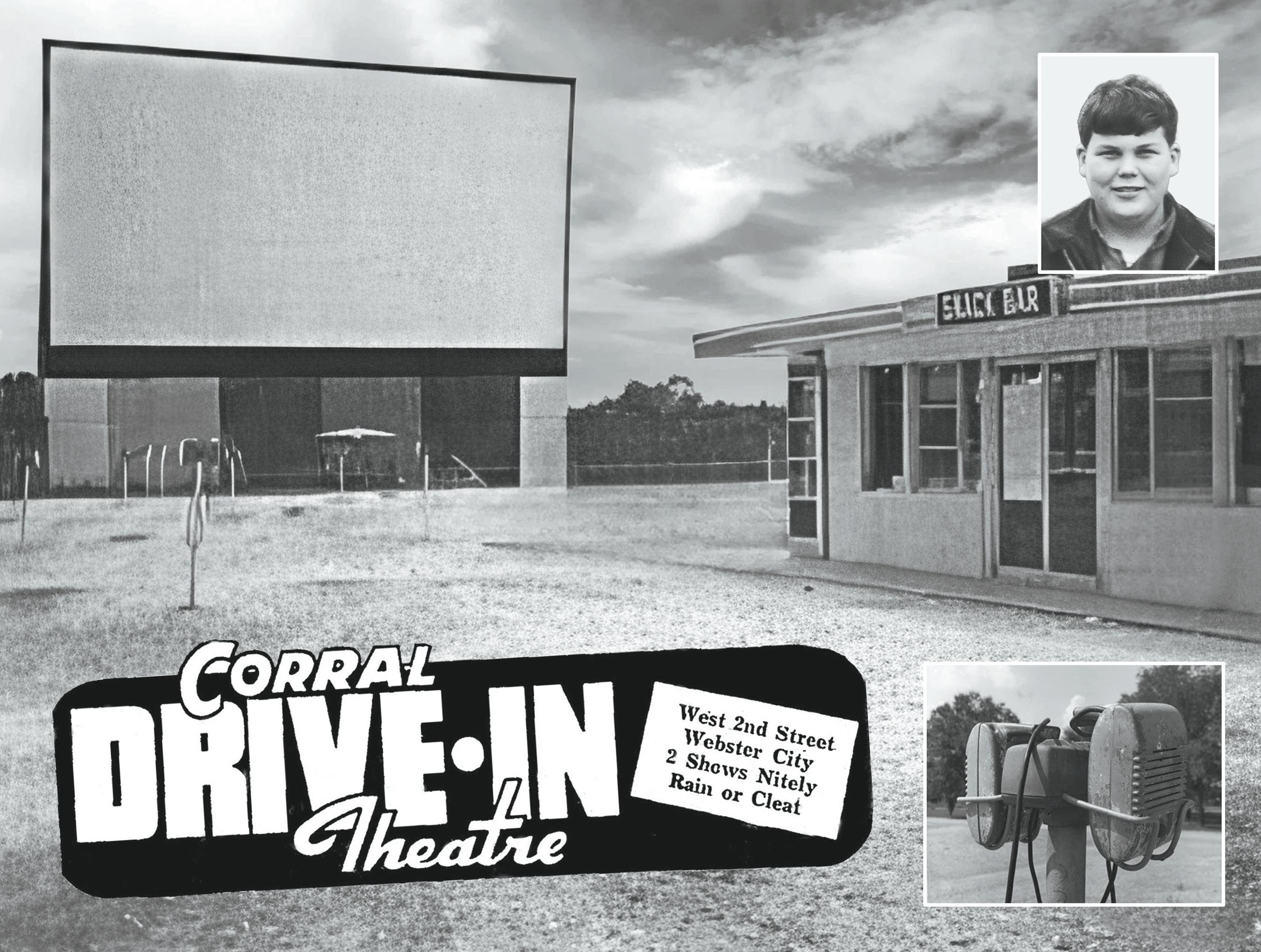
film or 1,800 feet. This meant that the typical film had five to six reels, which required us to switch projectors several times during the showing of the cartoon, trailers and the movie itself.
While the film was showing on the first projector, you threaded the film on the second projector. You also had to insure you had the correct lens installed and verify that the light source was operating properly, and it’s mirror clean. The light source was not a lamp but was from an arc created by two carbon rods, similar
The teenage Ken Lundy (insert) was a movie projectionist at the Webster Theatre from 1965-1971. Today he takes us on a nostalgic look back to the 1950s and 1960s. To show a movie in the era required five to six reels of film projected alternatively using two projectors. Pictured here is the model used at the Webster Theatre, a Simplex E-7 projector with Peerless Magnarc carbon-arc lamp house.
These twelve-inch cue marks were displayed on the upper right corner of the screen, providing the prompts for the projectionist to perform the changeover. The first mark signaled us to start the second projector, allowing it to get up to speed. Eight seconds later the second mark would trigger us to flip a switch that would close the shutter on the first projector and open a similar shutter on the second, a similar mechanism also transferred the sound to the second projector. If performed properly, the audience didn’t notice the changeover as it typically occurred during a movie scene change.
The cue marks were only on 4 frames, which meant they were only displayed for a few milliseconds, so blinking was not an option while you were waiting for dots to appear. To this day, I can’t watch an old film on TV and not fail to see the cue marks every 15-20 mins.
Once you successfully completed the changeover, you removed the reel from the first projector’s film magazine and rewound it to another reel preparing it for the next showing. You then prepared the projector and lamp house for the next changeover.
The projection booth was a solitary place requiring a battery of tasks to be performed every twenty minutes, followed by down time between reel changes. My mentor’s passion (Dale Ganseveld) was crossword puzzles. For me, it was a great opportunity to do some homework, play solitaire or watch the movie once again. Many times, the latter two won out and sadly, my grades would contest to that.
I have fond memories of my time as a projectionist and working for Art Downard at both of his theatres, the Webster Theatre and the Corral Drive-in. In the next article, I’ll share more memories and the lighter side of my time as a projectionist in Webster City and ultimately at the Ames theatres.
I know we all look forward to the grand reopening of the Webster Theatre. Please consider donating to the ongoing renovation and operations of the Webster Theatre. https:// www.webstertheater.org/donate/
In my first article, I recounted my early memories of being a young movie buff and securing my Dream Job working at the Webster Theatre. Today I thought it would be fun to cover the lighter side of being a projectionist along with some fun facts.
Working for Art Downard was an honor. He was a successful business man, but frugal. For all the years I worked for him, he paid us in cash. Every week you would receive a sealed envelope with a hand written pay stub along with the appropriate bills and coins. Beyond your wage, employee perks included free theatre admission and an undocumented perk of free popcorn and fountain drinks while on the job.
Let’s start with a fun story about movie ratings. Before the G, PG and R ratings, movies had an ABC Rating by the Catholic Legion of Decency (A: Morally Unobjectionable, B: Morally Objectionable in Part and C: Condemned). As a young catholic lad, I remember the priests and sisters in
catechism class telling us every week what B and C movies were not acceptable, unfortunately close to half the movies carried these dreaded ratings. I worked many Wednesday nights, and was always fascinated when I would spot one of our priests at the second showing watching the movies he told us we couldn’t watch. It made my time in the confessional always interesting. My question, “Was it a sin, if my job required me to watch the movie?”.
Who remembers those all-cartoon Saturday matinees? For the projectionist these matinees made for a frantic afternoon. Unlike a typical movie reel that was twenty minutes long, each cartoon was only six to seven minutes. Which meant you had to thread and change projectors 15-20 times over the course of the afternoon. Beyond the normal projector and lamp house preparations, you had to rewind and prepare the short reels for shipment that evening to the next theatre.
Working at the Corral Drive-in was more challenging and had its interesting moments. Everything was larger, including the carbon-arc lamp houses which were twice the size, given the distance and dimensions of the screen. This meant the light intensity and heat were extreme and required the projectors to be water cooled to prevent the film from melting. Beyond the size and complexity of the equipment, the mosquitoes, rain and hail storms added to the experience.
Most nights at the drive-in we showed two movies, but on weekends and holidays we showed three movies or more. Many times, the attendance for the third or fourth movie was sparse and a many of those movie goers had little or no interest in the movie.
Occasionally to speed things along, we would only show three of the five reels of the movie, typically the first, third and last reel. Most movie goers seemed to accept the fact that the cowboy shot in reel four (which they didn’t see) was now dead and they had no idea what happened. I’m not sure if Art Doward was aware of this practice, if he did, we never heard about it.
After those third and fourth movies we would turn on the field lights, there were always a few cars that didn’t leave. So, we had to walk the lot with a flashlight and wake up folks. Of course, a few were not wearing the full complement of clothes that they wore when they arrived at the drive-in.
If you really wanted to mess with people’s minds, you might accidentally show reel three before reel two. I’m sure this left everyone wondering how the murder victim in reel three was miraculously alive. A prequel to today’s flash backs.
So, what happens when the projectionist feel asleep during one of those late summer nights? Well, the film runs out and the screen goes white. Thankfully the honking cars would wake you up. That’s what I hear, of course this never happened to me.
If you went to the drive-in, you remember those speakers with coiled cords that you hung on your windows. We lost several of them every week as people would drive off with the speaker still attached to their window. To curb losses, Art had us install new cables on the speakers which included a hidden steel cable. It stopped the loss
of speakers, but a few windows gave up their life in the process. I’m sure the local glass repair shop appreciated the new business.
I thought I would close with some random memories and a few things you might not know.
Indoor movie screens are fabric and have 1,000s of tiny holes (perforations), which allow the sound from speakers behind the screen to pass through. This is even true of today’s screens.
The sound on 35mm film was typically an optical strip which was between the frame and the sprockets. It was picked up and converted to audio in the sound head which was below film projection compartment. This meant the sound led the picture image by 20-22 frames.
Some epic films like Sound of Music and Ben Hur had stereo sound and used magnetic strips (similar to recording tape) on the edges of the film. Fortunately for movie goers Art Doward and the studios invested in the required stereo equipment and additional speakers. Sadly during the 1960s, studios rarely released films with stereo tracks.
The carbon-arc light source system used DC vs AC voltage, there were vacuum tube rectifiers that converted the power. They rectifier cabinets were the size of a stove and as you can imagine created a lot of heat. The banks of teninch vacuum tubes produced the forty-five amps required to create the arc and flame. The glow from the rectifiers tube would change dramatically when starting the arc. I remember changing the marquee many nights after finishing my projectionist duties. We used a vintage wooden ladder that I’m sure dated back to the depression.

Changing the letters was not for the faint-of-heart as it swayed two or three feet in the wind, winter made it even more frighting. Art was a stickler to details and wanted the message centered, so you started in the middle of the marquee working right then returning to the middle to do the left side, this time with the letters stacked in reverse order.
So how did you get to the Webster Theatre projection booth? The booth, along with Art’s office was accessed from an outside stairway between the theatre and Cecil’s barber shop. The large marquee ladder was also stored at the top of these stairs. You could access the apartments above the theatre by continuing up the stairs. Given it was the late sixties, many nights the smoke drifting down the stairwell would provide you with a distinctive insight into what substances were being embraced above you. When I went to Iowa State, I continued to work as a projectionist. Initially at the Varsity & Ames theatres in Campus Town and in later years at the Collegian Theatre downtown and the Ranch Drive-In. During my college years, it allowed me to do my homework just like in high school. After college the evening hours allowed me to have a second job to support my growing family. Hopefully you enjoyed this journey back in time. I know we all look forward to the grand reopening of the Webster Theatre. Please consider donating to the ongoing renovation and operations of the Webster Theatre. https:// www.webstertheater.org/donate/
As you probably know, the Webster Theater sustained significant water damage during a fire next door that destroyed the neighboring building and ground the movie theater to a halt in late November 2023.
HERO — Help Entertain and Restore Organization, the nonprofit that originally restored the Webster — has been working since then to reopen the movie house.
Now it needs additional help.
“We are seeking donations to replace the outdated windows and doors to complete the exterior repair of the theater,” Jeff Pingel, HERO board president said recently. “The shoring of the north wall has depleted our funds. To date, we have raised $5,000 of the $37,385 required to complete the project.”
While repairing the fire damage, HERO and its contractor discovered additional work that needed to be done.
“Donations can be made via the QR codes on the doors of the theater in downtown Webster City, our website, checks payable to the Webster Theater (sent to 610 Second Street), or by contacting one of our board members directly.”
It’s a fine way to help support a history shared by so many people.
Books We Love
Never Caught: The Washingtons’ Relentless Pursuit of Their Runaway Slave, Ona Judge

By Erica Armstrong Dunbar
Simon and Schuster, 2017
By Lori Berglund
“The president of the United States today offered a reward for his runaway slave, a mixed-race woman known as Ona Judge. The young woman is said to be of light skin, many freckles, with bushy hair. She absconded from the executive mansion on Saturday afternoon after serving dinner to the president, his wife, and esteemed guests.
“Due to her work as lady maid for Mrs. Washington, she reportedly has a number of good changes of clothing. This, combined with her light skin, may make it easy for her to pass as a free woman. The president is offering a $10 reward for the return of this fugitive slave woman.”
Sounds awful, I know. But had I been a newspaper reporter working in Philadelphia in the late 1700s (then the seat of our new government), I might have written such a thing — Heaven forbid.
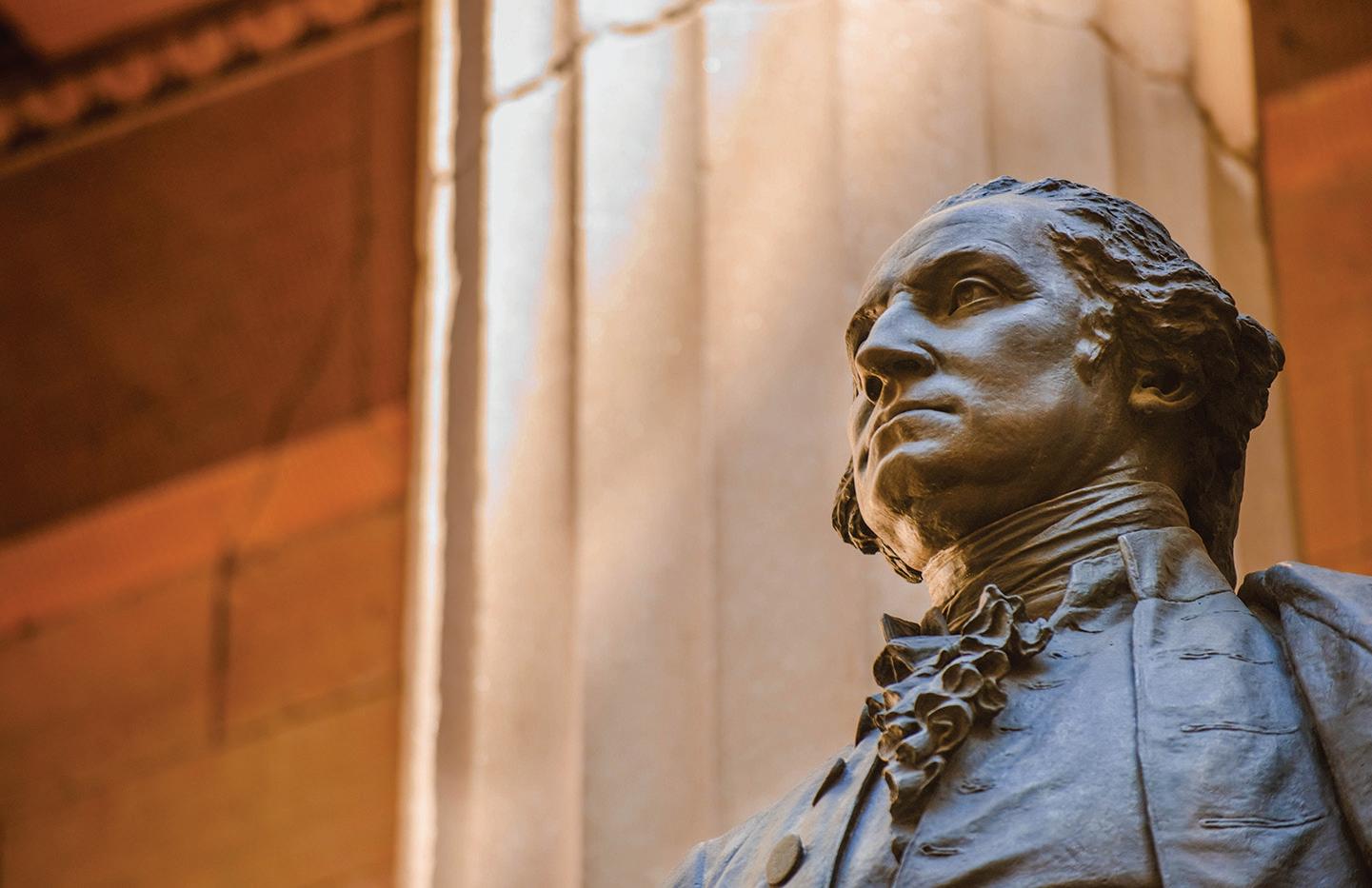
Hopefully, I might have had the wisdom and courage to frame the story a different way.
“Run, Ona, run! A freckle-faced young woman, enslaved since birth, has bravely risked life and limb to free herself from the bonds of slavery. Ona Judge has served President and Mrs. Washington in the executive mansion here in Philadelphia for some time and quietly slipped away Saturday afternoon. Free blacks and white friends within the city are said to have helped her get away and hide.
“Sadly, the president has been working a loophole in the laws of our beloved Commonwealth that require a slave who spends six consecutive months within the boundaries of Pennsylvania to be set free. Washington has thus far avoided the law by rotating his enslaved people back and forth between Philadelphia and his Mount Vernon estate in Virginia.
“The brave Miss Judge has now freed herself. She is one of more than 100 slaves owned by the estate of Mrs. Washington’s first husband, the late Daniel Parke Custis, and is not, henceforth, the property of the president, but of the Custis Estate. The president has responsibility over the estate and must either capture her or reimburse the estate for her value. He is offering a $10 reward for her return.”
Believe it or not, it’s all true. Her story is retold in Never Caught: The Washington’s Relentless Pursuit of Their Runaway Slave, Ona Judge by Erica Armstrong Dunbar.
Miss Judge was born at Mount Vernon in about 1774. Her mother was a black woman enslaved as a seamstress for the Washingtons. Her father was a white man who worked as a tailor at Mount Vernon. She escaped in 1796, shortly before she was due to be rotated back to Virginia. Ona was a prized seamstress and lady’s maid. So much was her value that Mrs. Washington planned to “give” Ona to one of her granddaughters as a wedding gift.
While the Washingtons were known for their humane treatment of enslaved people. (That is, if you can be humane to a person you consider your private property.) The granddaughter had a much different reputation. Ona wanted nothing to do with that woman. And, she had seen black men and women living free in Philadelphia. She wanted freedom for herself, and she achieved it.
As the name of the book implies, despite
renewed efforts over the years to locate and bring this woman back to slavery, Ona lived the rest of her life in hidden freedom. She would eventually marry and have children. But her husband died very young and was mostly destitute, except for the kindness of friends. She also found faith in God, and that gave her great comfort. If she had been caught, not only would she return to slavery, but her children would also be considered “property” of the Custis Estate.
The book has a powerful story to tell. It is not a leisure novel. It reads more like a scholarly work, a very important work. Judge moved around the eastern seaboard a few times to help throw off those who came looking for her. However, in the late 1840s, as she was nearing the end of her own life, she did grant an interview to an abolitionist paper. It is this interview that helps us know more about her brave story.
In many respects, her life was harder as a very poor, runaway slave, than it might have been as a house maid to the wealthy Washingtons. But she never once regretted running away. She was free — and that was all that mattered.
I find this book an interesting choice for February, when we mark both Black History Month and Presidents’ Day.
How do we reconcile the horrid facts of slavery with honoring presidents who once upon a time owned slaves? Sadly, it was the norm for much of our early history. Twelve of the 18 presidents between 1789 and 1877 were slave owners at one time during their lives.
We fail to recognize today just how hard it was to free our nation from the sin of slavery. It was hard, bloody, cruel, and oh so necessary. The war to end it took more lives than any other war we have ever fought. One reason I wanted to draw attention to this book is that I fear more people are buying into the deluded argument
that the Civil War wasn’t about slavery. Need convincing, I urge you to read Lincoln’s Second Inaugural Address, or the long texts of the Lincoln, Douglas debates. It takes only a little searching to bring all of this up online.
The North and South may have disagreed about a number of things, but the only thing for which they were willing to die in such large numbers was slavery — plain and simple. Please, think about that before you buy a Confederate flag, as I see cropping up in our free state.
At the same time you won’t find me disparaging our nation’s first president.
Now, don’t get me wrong, I love President Washington. He probably did the best he could for his times. He did oppose slavery, as did many of the founding fathers. But getting rid of it would not happen quickly. It took a man with the stature of Lincoln to rid this nation of it. Everything in our history, from the Missouri Compromise to Bleeding Kansas led us to the Civil War. It was always about slavery.
To his credit, Washington’s will demanded that all of his own slaves be freed upon his wife’s death. He had no power to free the even larger number of slaves from the Custis Estate. Mrs. Washington, aware that the freedom of these slaves hinged upon her own death, set them free early, not long after her husband’s death. Perhaps she figured she would live longer that way, Sadly, it was only the Washington slaves who gained their freedom; the Custis slaves remained enslaved, some of them and their
descendants would wind up in the family of Mrs. Washington’s great granddaughter and her husband, a man by the name of Robert E. Lee.
Oh, what a tangled thing is our nation’s history.
To learn more, I encourage readers to visit mountvernon.org. This is a wonderful site that faces the issues of slavery with the type of honesty that is lacking too often in today’s social media and online sites. It is an extremely welldone site that will share and celebrate the best of Washington, his role as General, as well as his vital work at the Continental Congress, and as first president. There is no whitewash, just a refreshingly unbiased look at history, the good and bad, and the struggles along the way.
My favorite portion of the mountvernon.org site is a drop-down menu that gives brief bios of the men and women who were enslaved at Mount Vernon. This is a story worth knowing. Make time for it in your reading this month.
Never Caught is available from online booksellers and at Kendall Young Library.
Understanding Permit Requirements in Webster City
Embarking on a construction or renovation project is an exciting opportunity to improve your property, and Webster City is here to support you every step of the way. Understanding permit requirements not only protects your investment but also ensures safety and compliance for years to come. Here’s what you need to know about permits, inspections and how we can help.
Webster City has adopted nationally recognized building codes to prioritize the safety and welfare of residents and businesses. These codes ensure that structures are built to withstand various risks, such as fire or structural issues, while enhancing durability and functionality. Additionally, the City has embraced the International Property Maintenance Code to encourage property upkeep and beautification, contributing to a vibrant and thriving community.
These codes are not just regulations, they’re a collaborative effort to maintain high-quality standards and protect your investment.
Permits are generally required for projects that involve:
• Structural changes, such as building additions, new constructions, or significant renovations.
• Electrical, plumbing and mechanical work.
• Installing or altering HVAC systems.
• Decks, patios, fences or retaining walls.
• Accessory structures and sheds that are 120 sq ft or larger.
• Concrete pours, including driveways, sidewalks and foundation work.
• Changing the use of a building, such as converting a retail space into an eating establishment.
If you are considering purchasing a property and changing its current use, we recommend contacting the City first. We’ll help ensure zoning compliance and determine if a change of use permit or code review is necessary.
Some projects don’t require permits, including:
• Painting, wallpapering, or other purely cosmetic updates.
• Installing flooring or carpeting.
• Minor repairs that don’t involve structural changes, electrical, mechanical or plumbing work.
• Small sheds (under 120 square feet)
• Cosmetic work, such as replacing siding, windows (without resizing), or roofing, provided no structural changes are involved.
If you are unsure whether a permit is needed, our team is happy to clarify requirements for your specific project.
Permits can be obtained by either the property owner or the contractor performing the work. If you’re working with a contractor, confirm they are licensed and will handle the permit process on your behalf. For DIY projects, homeowners are responsible for ensuring all necessary permits are secured.
Inspections are an essential part of the permit process, helping ensure your project meets safety and quality standards. Typical inspections include:
• Pre-construction: Review of plans and site preparation.
• During Construction: Inspections for footing, foundation, framing, electrical, plumbing, mechanical and other key components.
• Final Inspection: Comprehensive review upon project completion.
Applying for a building or trade permit in Webster City is straightforward:
1. Visit the City’s website at www.webstercity.com to access permit forms and guidelines or stop by the Building and Zoning department in person.
2. Complete the required application form with project details and any accompanying plans.
3. Submit your application online or in person at City Hall.
4. Pay the applicable fees.
After review the City will contact you if additional information is required or to proceed with issuing the permit and collecting payment.
Webster City is dedicated to fostering development and beautification, encouraging property owners to take pride in their space and contribute to the community. Whether you’re planning a small home improvement or a larger commercial project, our team is here to help guide you every step of the way.
We are committed to providing excellent customer service and ensuring you feel supported through your project. From start to finish, we ensure your project complies with all regulations and stays on track. Our staff is available to assist with applications, answer questions and provide the support you need. Additionally, V&K are highly trained professionals committed to your project’s success.
Webster City is here to make sure your project is a success, with support every step of the way.
For any questions about building and trade permits or to schedule an inspection, please contact:
• Webster City’s Building and Zoning Department Team: 515-832-9151
• Veenstra & Kimm, Inc. (V&K): 515-850-2980
Permits and codes may seem daunting, but they’re designed to protect you, your property, and the community in the long run. By partnering with the City of Webster City, you’ll have the support and resources you need to succeed. Let’s work together to create a safe, more beautiful community for everyone.




Breakfast has long been touted as the most important meal of the day. After individuals spend several hours sleeping, breakfast refuels their bodies and prepares them to tackle the day ahead.
People on the go may not have a lot of time to enjoy breakfast, which means they may grab something quick and not always so healthy. But a filling, hot breakfast provides enough sustenance and nutrients to last until lunch. Such is the case with “Green Chile Breakfast Burritos” from “Taste of Home Healthy Cooking Cookbook” (RDA Enthusiast Brands, LLC) by the Taste of Home Kitchens.
Makes 6 servings
6 eggs 3 egg whites 1 jalapeño pepper, seeded and minced Dash cayenne pepper
4 breakfast turkey sausage links, casings removed
3⁄4 cup shredded reduced-fat Mexican cheese blend
1 can (4 ounces) chopped green chiles, drained
6 whole wheat tortillas (8 inches), warmed
6 tablespoons salsa
1. In a small bowl, whisk the eggs, egg whites, jalapeño and cayenne; set aside.
2. Crumble sausage into a large skillet; cook over medium heat until no longer pink. Drain. Push sausage to the sides of pan. Pour egg mixture into center of pan. Cook and stir until set. Sprinkle with cheese and chiles. Remove from the heat, cover and let stand until cheese is melted.
3. Place 1⁄3 cup mixture off center on each tortilla. Fold sides and end over filling; roll up. Top with salsa.










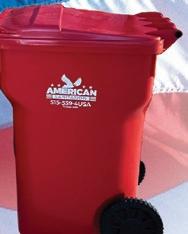








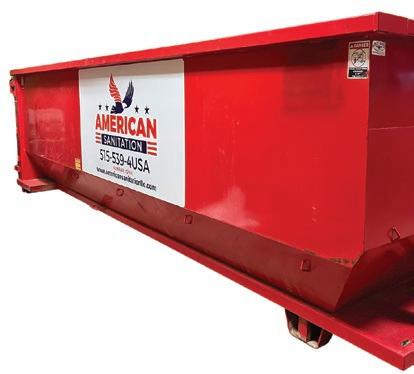





by Jim Miller
Dear Savvy Senior , When should someone with dementia stop driving?
My 83-year-old father has some dementia issues but still drives himself around town pretty well.
Most doctors agree that people with moderate to severe dementia should never get behind the wheel, but in the early stages of Alzheimer’s or other types of dementia, driving performance should be the determining factor of when to stop driving, not the disease itself.
With that said, it’s also important to realize that as your dad’s driving skills deteriorate over time from the disease, he might not recognize he has a problem. So, it’s very important that you work closely with his doctor to monitor his driving and help him stop when it is no longer safe for him to drive. Here are some additional tips that can help you.
The best way to keep tabs on your dad’s driving abilities is to take frequent rides with him and watch out for warning signs. For example: Does he have trouble remembering routes to familiar places? Does he drive at inappropriate speeds, tailgate, drift between lanes or fail to observe traffic signs? Does he react slowly or make poor driving decisions? Also, has your dad had any fender benders or tickets lately, or have you noticed any dents or scrapes on his vehicle? All of these are red flags.
If you need some assessment help, hire a driver rehabilitation specialist who’s trained to evaluate older drivers. See Myaota.aota.org/driver_search or Aded.net to locate one in your area.
Through your assessments, if you believe it’s still safe for your dad to drive, you should start recommending some simple adjustments to ensure his safety, like driving only in daylight and on familiar routes, and avoiding busy roads and bad weather. Also, get him to sign a dementia “driving contract” that designates someone to tell him when it’s no longer safe to drive. Go to Alz.org/driving and click on the “Download” button to print one.
You may also want to consider getting a GPS car tracking device (like Bouncie.com or MotoSafety. com) to help you monitor him. These devices will let you track where he’s driving and allow you to set up zones and speed limits that will send you alerts to your smartphone when he exits an area, or if he’s driving too fast or braking harshly.
When your dad’s driving gets to the point that he can no longer drive safely, you’ll need to talk to him. It’s best to start having these conversations in the early stages of the disease, before he needs to quit driving so he can prepare himself.
You also need to have a plan for alternative transportation (including a list of family, friends and local transportation options) that will help him get around after he stops driving.
For tips on how to talk to your dad, the Hartford Center for Mature Market Excellence offers a helpful guide called “At the Crossroads: Family Conversations About Alzheimer’s Disease, Dementia and Driving” that you can download at TheHartford.com/ Publications-on-Aging.
If your dad refuses to quit, you have several options. First, suggest a visit to his doctor who can give him a medical evaluation, and prescribe that he stops driving. Older people will often listen to their doctor before they will listen to their own family.
If he still refuses, contact your local Department of Motor Vehicles (DMV) to see if they can help. Some states will automatically revoke a license when a person is diagnosed with Alzheimer’s or dementia, while many others require retaking a driving test.
If these fail, consider hiding his keys or you may need to take them away. You could also disable his vehicle by disconnecting the battery, park it in another location so he can’t see it or have access to it, or sell it.







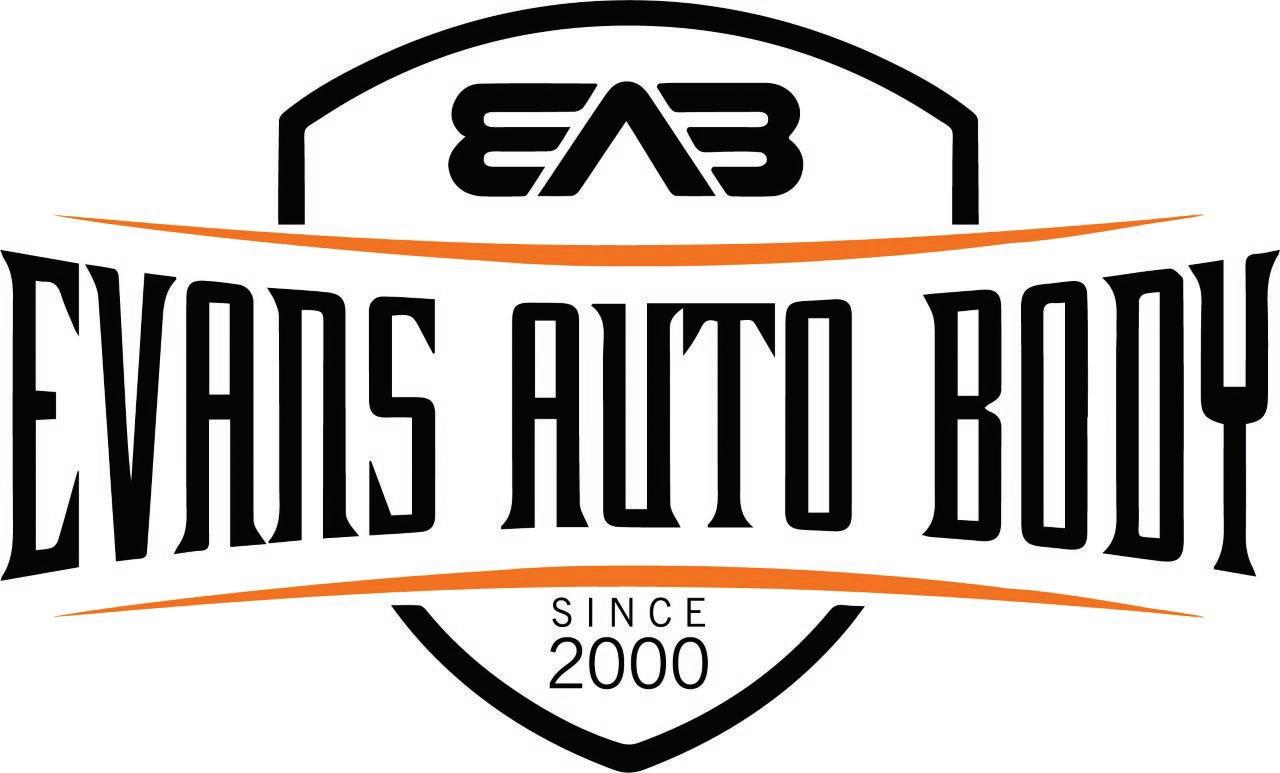



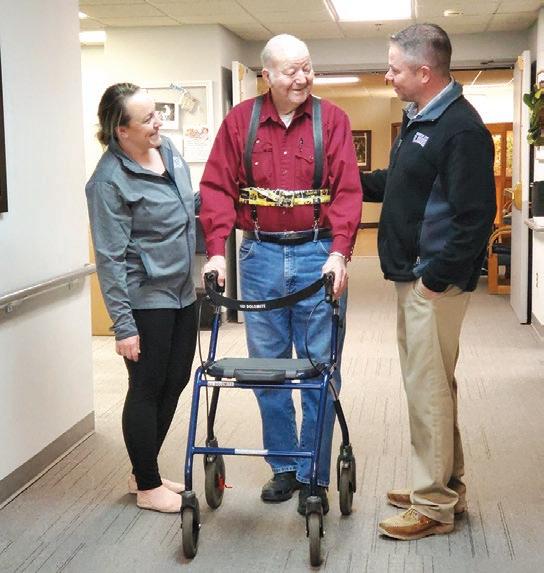







4th
Buffalo Wild Wings
Burger King
Burrito Mexpress
Casablanca Steakhouse Culvers
Domino’s Pizza
Dunkin’ Donuts
Family Table
FeedSheed Catering
Fort Dodge Freeze -Dried
Godfather’s Pizza
Hacienda Vieja
Knuckleheads Bar & Grill
Larita’s Cakes N More
Leon’s Pizza
Lomita’s Mexican Restaurant
Mulligan’s Bar & Grill
Papa Murphy’s
Pop’s Pizza & Pub
Rides Bar & Grill
Salty Suz
Sneakers Eatery & Pub
Stadium Inn
Stumpy’s Taco Tico
Thyme
Smoothie Village Inn










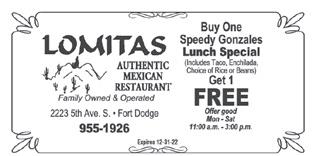





















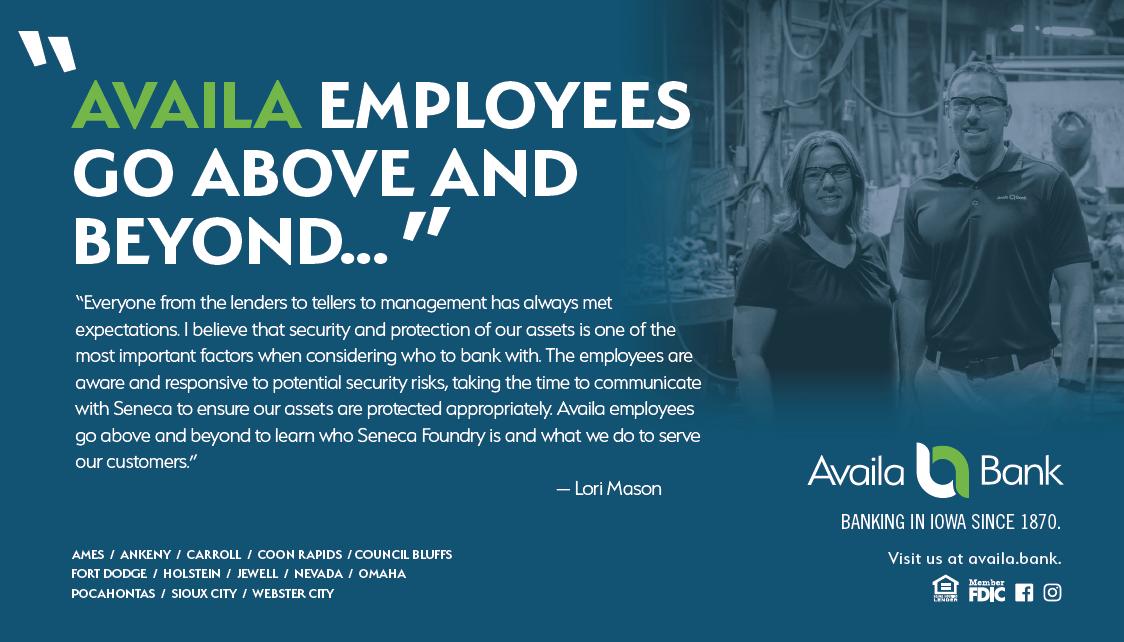

Van Diest Medical Center proudly offers a customized education program for those looking for the tools and resources to control their diabetes. This program, certified by the American Diabetes Association and the State of Iowa, allows patients to better understand the nature of their disease and the actions they can take to manage it.
Our diabetic education services include:
DiabetesComprehensiveSelf-Management
GestationalDiabetesManagement
InsulinAdministrationInstruction
IndividualDiabetesSelf-Management


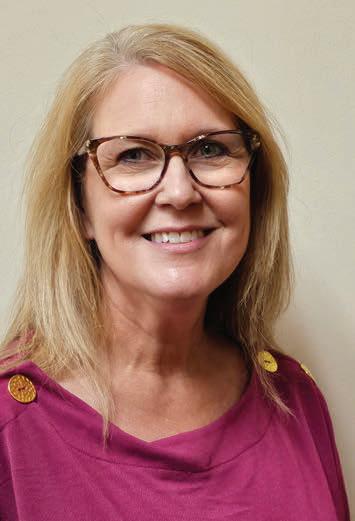
KristiZwiefel RegisteredDietitian AmyMcCollough RegisteredNurse

